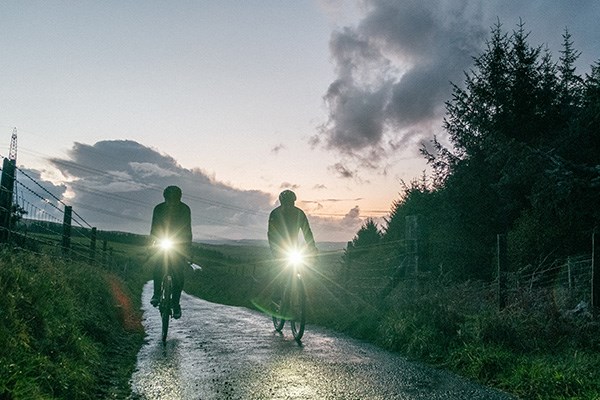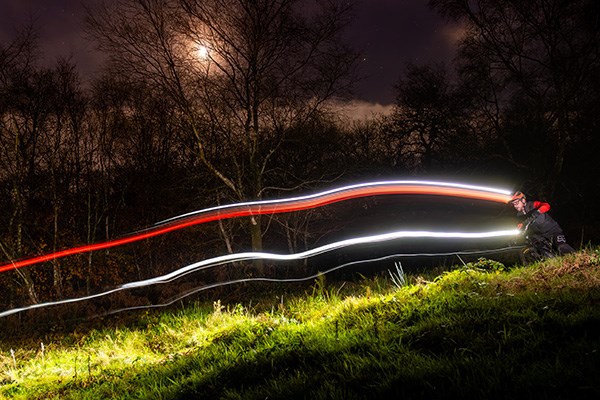If you’re cycling at night on unlit roads or trails, then you’ll need a good front bike light to see where you’re going. Bike lights emit different levels of light, and you’ll need one that’s bright enough to see where you're going. It’s not always obvious how far a specific model will allow you to see, so we’ve created this lumen comparison guide to help you to choose the right light for your night rides.
Bike Light Lumen Comparison Test
How is brightness measured?
Lumens (lm) is a measurement of the amount of light that’s emitted from a bike light. Most brands will quote the lumens that their lights emit, so it’s a good number to look for when choosing a bike light. For reference your phone torch emits about 40 Lumens, while a single car headlight puts out around 1,200 lumens on full beam.
The actual brightness of the light also depends on the beam pattern. Lumens aren’t a direct measure of how far the light shows or how bright it is at a point, but they will give you a good idea of how bright the lights are.

How bright are bike lights?
To help you visualise how bright a bike light with a certain lumen value is we tested a range of bike lights with different lumen outputs in the same position. To cover the full range of usable light outputs we picked a range of lights with brightness’s that go from 200 lumens, which is about the minimum brightness you need to see the trail in front of you, all the way up to over 5,000 lumens for our very brightest bike light.
We chose a stretch of fire road in our local woods for the test and set up coloured cones at 2 metre intervals on either side. We picked different colours repeating every 10 metres to show the distances illuminated for each light. The red cones are set at 2m, 12m, and 22m, blue at 4m, 14, and 24m, yellow at 6m, 16m and 26m, green at 8m, 18m and 28m, and white at 10m, 20m and 30m. The lights were all set to their highest brightness setting and mounted on a handlebar set at the same height for consistency.
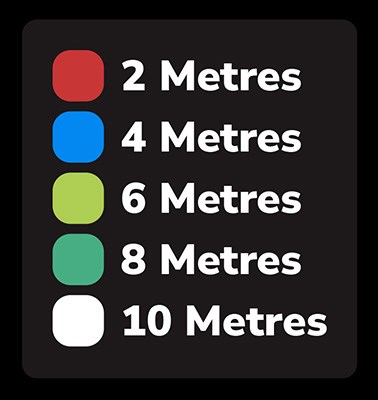
200 Lumens - Cateye AMPP 200

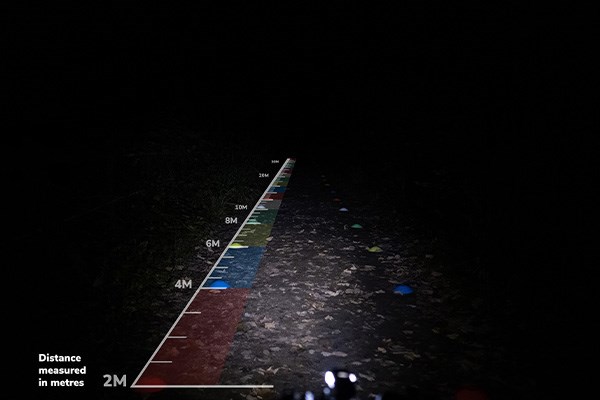
500 Lumens - Cateye AMPP 500


800 Lumens - Cateye AMPP 800


1,500 Lumens - Moon Rigel Max

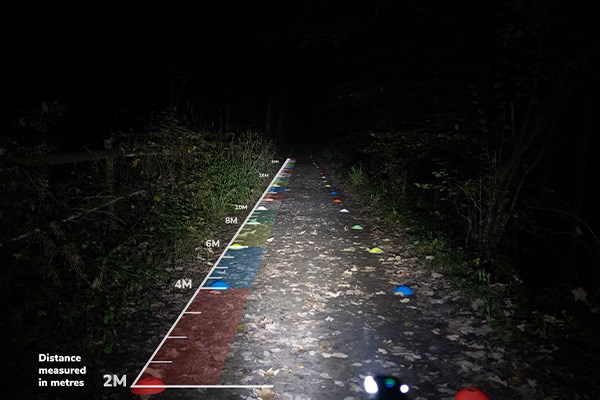
2,600 Lumens - Moon Rigel Enduro

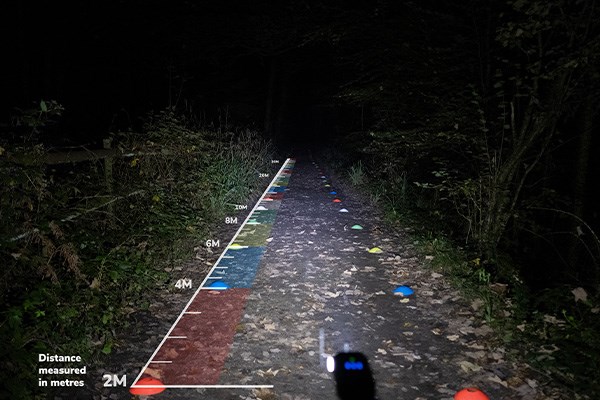
3,600 Lumens - Exposure Toro
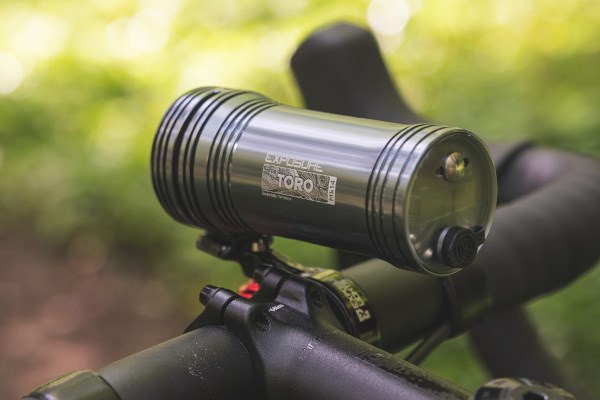

4,600 Lumens - Exposure Maxx-D
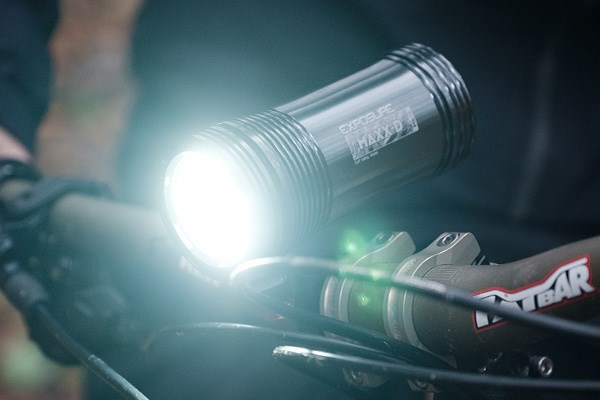
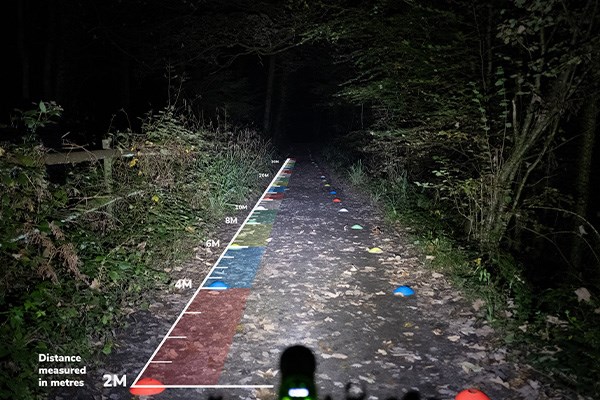
5450 Lumens - Exposure Six Pack


Other things to consider when buying a bike light.
Beam pattern
Beam pattern makes a difference to how much you can see on the bike, the ideal pattern will depend on where you are riding. For example, narrow more focused beam patterns are ideal for riding wide gravel tracks at speed as this helps you to see further in front of you. When riding narrower more technical MTB trails a wider beam pattern is better as this will help you to see things off to the side of the track as well as in front.
You can see this difference with the Exposure Toro and Maxx-D above. Both these lights illuminate the same distance in front even though the gravel focused Toro is 1,000 lumens dimmer. The Maxx-D MTB light uses its extra lumens to light up the side of the trail as this is more useful for mountain bike night riding.
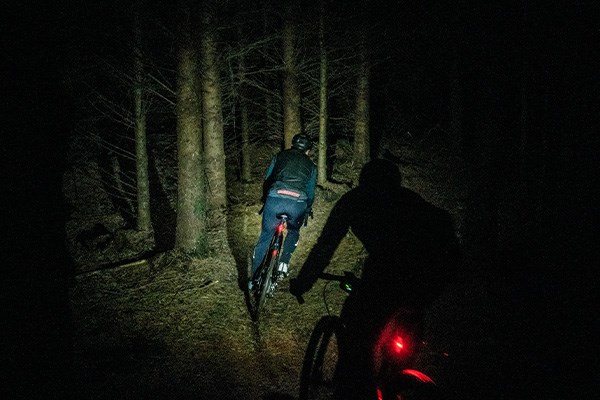
Helmet or handlebar mount?
The standard for mountain bike night riding is to have one light on the handlebar to light the trail ahead, and one on the helmet to see around tight corners. The helmet light needs to be reasonably lightweight for comfort, so the brighter, bulkier light is on the handlebars. When riding on the road a helmet light isn’t advisable as it will dazzle oncoming traffic. Many bike lights up to 2,000 lumens are supplied with both handlebar and helmet mounts so you can choose how to use them.
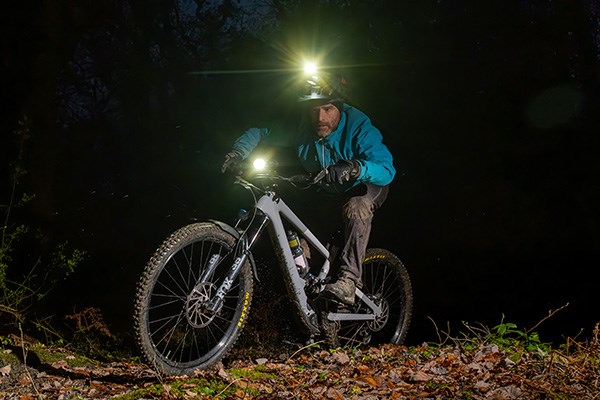
Runtimes
Brighter lighting requires more battery power, so all good bike lights allow you to choose dimmer settings for increased runtimes. When descending at speed you’ll want the light to be as bright as it can be, but when you’re climbing you won’t need so much light. Changing between modes while you ride is usually the best approach and some of the best bike lights have modes that do this automatically. Most good bike light brands give you runtimes for the various modes of their bike lights.
